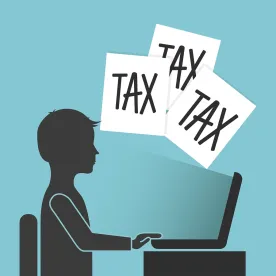After a whirlwind three month legislative process marked by promise and peril for the renewable energy sector, the Tax Cuts and Jobs Act (TCJA)left the sector relatively unscathed. The Senate Finance Committee’s decision to forego an energy tax title carried through in the final bill, meaning that the status quo largely prevails.
That is good news for wind and solar, whose multi-year phase-down deal will be left intact by default. The landscape for renewables would have been significantly altered by proposed changes in the House bill, particularly with respect to the wind production tax credit (PTC), causing great alarm and, ultimately, relief, given the final outcome.
The new law's silence is less sanguine for those technologies left out of the 2015 PATH Act deal, for whom investment tax credit (ITC) eligibility lapsed at the end of 2016. These so-called “orphaned” technologies range from fiber optic solar and fuel cell to combined heat and power system and small wind. The orphans received an early boost from their proposed restoration in the initial House bill, only to see their hopes dashed in the Senate, long thought to be the friendlier chamber. The credits’ revival for the orphans now rests on a tax extenders package that is likely to be considered along with a long-term government funding package in late January. The proposed extenders bill would retroactively extend the expired credits while harmonizing them with the PATH Act’s phase-down schedule.
While the TCJA makes no statutory changes to existing energy tax credits, its most significant impact on the renewable energy sector comes in the form of a new international minimum tax, the Base Erosion and Anti-Abuse Tax, or BEAT. BEAT requires an affected corporation to pay a minimum tax equal to 10% (5% in 2018 as a transitional relief, and increasing to 12.5% beginning in 2026) of such corporation’s modified taxable income—that is, taxable income after adding back otherwise deductible “base erosion payments” to a related foreign party and a percentage of any net operating loss deductions allowed for the taxable year that were carried forward from another year.
The tax is intended to prevent multinational corporations from significantly reducing their federal income tax by “stripping” their U.S. earnings through deductible payments to foreign affiliates. The amount owed by an applicable taxpayer is the excess of this BEAT calculation over the taxpayer’s regular tax liability reduced by most business credits, effectively clawing back the credits’ value. Only certain specified credits may be used to offset the tax, namely the research and development (R&D) tax credit, which is fully preserved for BEAT purposes, and the low income housing tax credit, PTC, and ITC, each of which is preserved up to 80% prior to 2026. Compared to the original Senate proposal that would have rendered PTCs and ITCs useless under BEAT, the TCJA provides some relief by limiting the possible claw-back to 20% through 2025. Barring future congressional action, regular tax liability will be reduced by all credits beginning in 2026, the same year the BEAT rate climbs to 12.5%.
BEAT only applies to a corporation (other than a RIC, a REIT or S corporation) with average annual gross receipts for the past three years equal to or exceeding $500 million. BEAT applies to such a corporation only in years in which the base erosion percentage of such corporation is 3% or higher. The base erosion percentage generally measures the deductible cross-border payments made by the corporation to its foreign affiliates relative to such corporation’s total deductions for the taxable year.
Thus, large corporations with international operations are most likely to be subject to BEAT. Corporations with only domestic operations will not be subject to BEAT. So, the impact on the availability of tax equity capital will depend in part upon the anticipated sources of that capital. If such capital is expected to come from solely domestic investors, the less effect BEAT will have on the pricing of the tax equity capital. BEAT also creates uncertainty in the market since a corporation will not know whether it is subject to BEAT in a given year until the end of such year.
One alternative available for wind projects to mitigate the impact of the uncertainty is to claim ITCs in lieu of PTCs, since ITCs are claimed entirely in the year the tax equity investor closes the funding, while PTCs are claimed over ten years after a project is placed in service, making it impossible to predict the extent to which BEAT would limit the benefit of the tax credits over the life of the project. However, given the current production capacity of wind projects, the election of ITCs in lieu of PTCs will likely reduce the amount of the available tax credits. Another alternative for wind projects to mitigate the impact of the uncertainty is to employ a modified pay-go structure for PTCs subject to BEAT. In such a structure, a portion of the total payment from the tax equity investor would remain contingent and be made to the developer each year based on the amount of the PTCs actually utilized by the investor in that year. No payment would be made to the developer for PTCs that are clawed back by BEAT. This would expose the developers to the BEAT risk of the tax equity investors. Traditionally developers have not borne any risk associated with any potential limitation on an investor to utilize the tax credits generated by a project, but that may become necessary if the availability of tax equity capital decreases significantly as a result of the tax law changes affecting the benefit of the PTCs under the TCJA.
On the domestic front, the corporate alternative minimum tax (AMT) is repealed by the TCJA, effective January 1, 2018. While PTCs had previously been permitted to offset AMT liability for the first four years, the Senate-passed bill would have threatened the value of the credit for the remainder of the 10-year window. Outright repeal of AMT ensures that PTCs can be fully utilized (unless they are subject to BEAT).
In the single largest provision in the TCJA, the corporate tax rate is reduced to 21% starting in 2018. While this is good news for profitable businesses and their shareholders, the lower corporate tax rate may decrease both the number of tax equity investors and the amount of income taxes a tax equity investor needs to shield. In addition, the lower corporate tax rate will reduce the value of tax deductions and thereby increase the cost of tax equity capital. Since tax deductions are typically taken in the first few years of a project, the earlier a project is in its life cycle, the more such project will be affected by the decreased corporate tax rate.
In the end, the first significant re-write of the federal tax code in a generation took a hands-off approach to renewable energy—and given certain proposed changes early in the process that is generally a welcome development. The new law’s direct effect on the renewables sector will be muted, with secondary impact on the margins as investors (and their tax strategies) adjust to the new regime.




 />i
/>i


